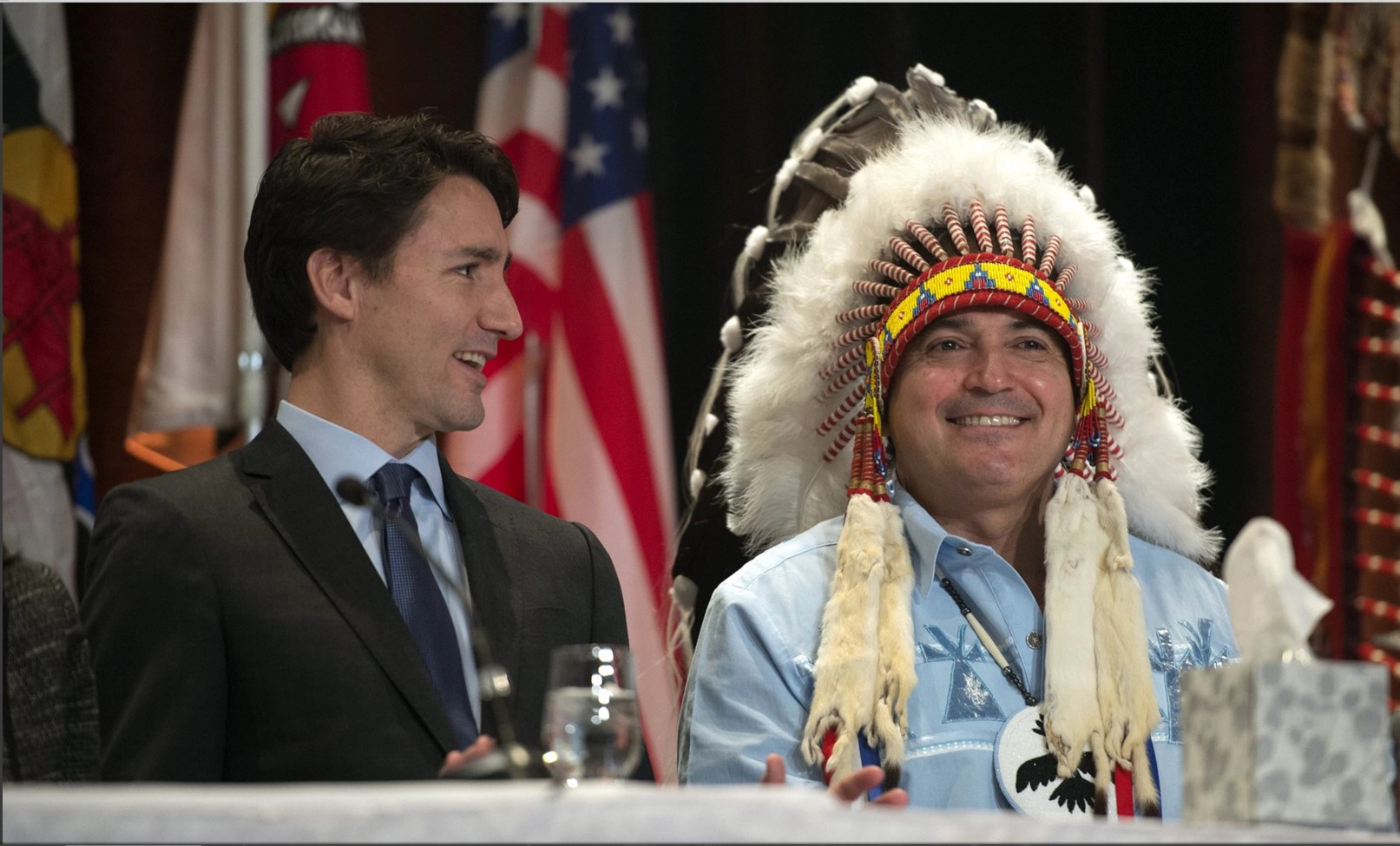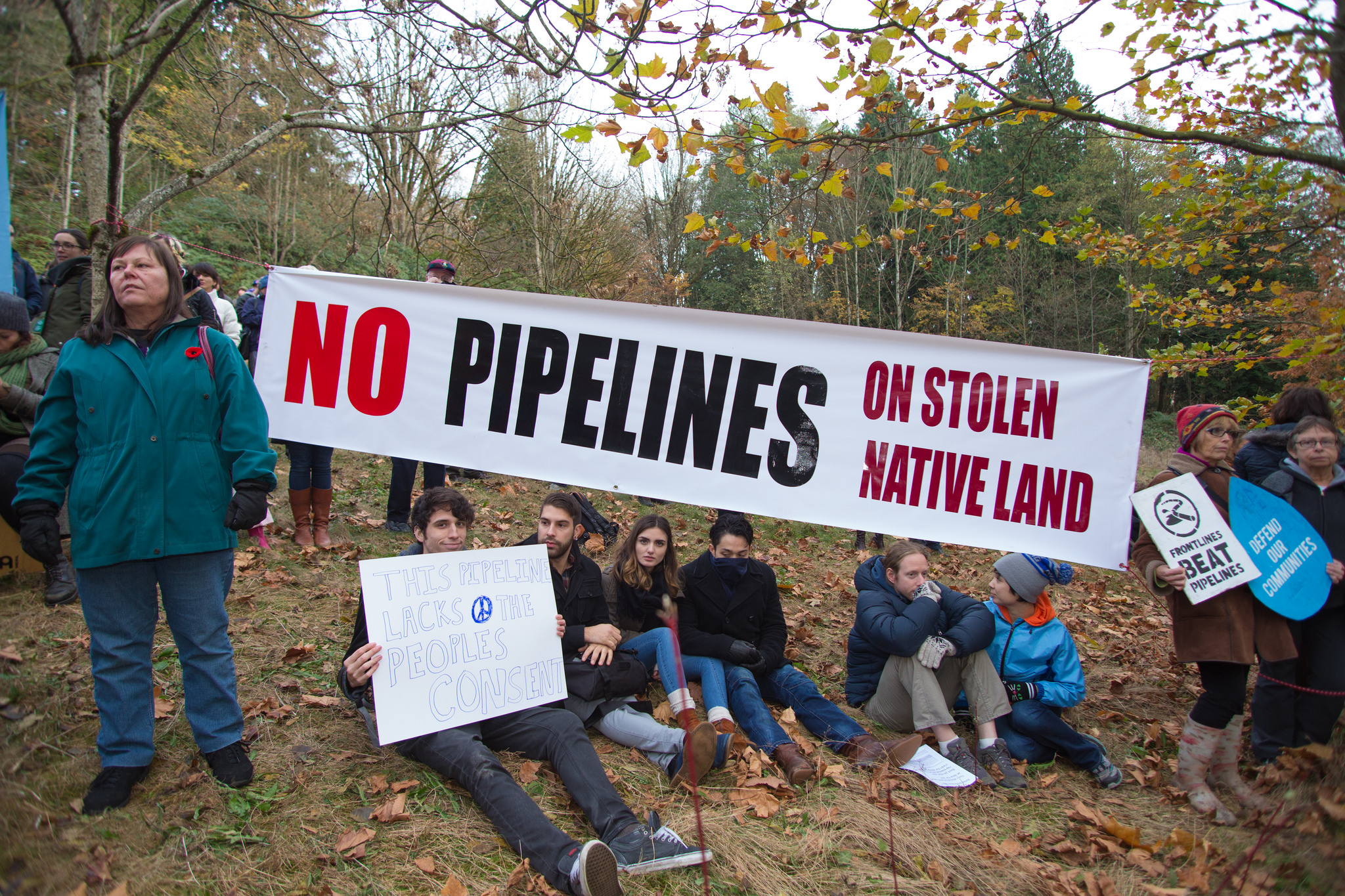In Canada, the term Indigenous peoples (or Aboriginal peoples) refers to First Nations, Métis and Inuit peoples. These are the original inhabitants of the land that is now Canada. In the 2021 census by Statistics Canada, over 1.8 million people in Canada identified as Indigenous, making up 5 per cent of the national population. Though severely threatened — and in certain cases extinguished — by colonial forces, Indigenous culture, language and social systems have shaped the development of Canada and continue to grow and thrive despite extreme adversity.
This article is a full-length entry about Indigenous Peoples in Canada. For a plain-language summary, please see Indigenous Peoples in Canada (Plain-Language Summary).
Who are Indigenous Peoples in Canada?
There are three categories of Indigenous peoples in Canada: Inuit, Métis and First Nations. The Inuit primarily inhabit the northern regions of Canada. Their homeland, known as Inuit Nunangat, includes much of the land, water and ice contained in the Arctic region. Métis peoples are of mixed European and Indigenous ancestry, and live mostly in the Prairie provinces and Ontario, but also in other parts of the country. First Nations peoples were the original inhabitants of the land that is now Canada, often occupying territories south of the Arctic.
The Indian Act — the principal statute through which the federal government manages a variety of issues concerning Indigenous affairs — further divides Indigenous peoples into two categories: Status Indians and Non-Status Indians. (See also Indian Status.) Status Indians are individuals who are listed in the Indian Register and are issued identification cards (known as status cards) that contain information about their identity, band and registration number. Non-Status Indians are Indigenous peoples who are not registered with the federal government (See also Indian).
All Indigenous peoples in Canada are protected by section 35 of the Constitution Act, 1982, which enshrines Indigenous rights. The federal government departments responsible for the affairs of Indigenous peoples are Crown-Indigenous Relations and Northern Affairs and Indigenous Services.
Many Indigenous nations have signed treaties with the Crown. These agreements have allowed for the use of Indigenous lands in exchange for annual payments and/or other benefits. Treaties form the constitutional and moral basis of alliance between Indigenous peoples and Canada.
Take the quiz!
Test your knowledge of Indigenous peoples by taking this quiz, offered by the Citizenship Challenge! A program of Historica Canada, the Citizenship Challenge invites Canadians to test their national knowledge by taking a mock citizenship exam, as well as other themed quizzes.
History
Indigenous peoples have been in Canada since time immemorial. They formed complex social, political, economic and cultural systems before Europeans came to North America.
With colonization and white settlement, traditional Indigenous ways of life were forever altered. Colonial practices and policies, such as the Indian Act, pass system, reserves and residential schools, sought to control and assimilate Indigenous peoples. These have had historic and ongoing impacts on generations of Indigenous peoples.
Such practices and polices, when combined with racism, acts of segregation, loss of land, and declining or unequal access to food resources and public services, have had devastating consequences on the health and socio-economic well-being of Indigenous peoples. (See also Social Conditions of Indigenous Peoples; Economic Conditions of Indigenous Peoples.)
The final reports of the Truth and Reconciliation Commission and the National Inquiry into Missing and Murdered Indigenous Women speak to ongoing work of reconciliation.
Demographics
In the 2021 census, 1,807,250 people in Canada identified as Indigenous, making up 5 per cent of the national population. The First Nations population numbered 1,048,405, the Métis population was 624,220, and the Inuit population reached 70,545.
The Indigenous population in Canada is growing steadily; between 2006 and 2016, it has grown by 42.5 per cent, more than four times the growth rate of the non-Indigenous population. From 2016 to 2021, the Indigenous population grew 9.4 per cent. This indicates the Indigenous population was growing at nearly twice the rate of the non-Indigenous population. Statistics Canada projected, in 2016, that in the next 20 years, the Indigenous population will likely grow to more than 2.5 million people. The changes in population reflect increased life expectancy, high birth rates, and more people identifying as Indigenous in the 2016 census.
The 2016 census showed population growth in First Nations communities both on and off reserve; from 2006 to 2016, the on-reserve population grew 12.8 percent while the off-reserve population grew 49.1 per cent. Statistics Canada also reported that the Métis are the most likely Indigenous group to live in an urban community; nearly two-thirds of the population lived in a city in 2016. For the Inuit, nearly 75 per cent of the population inhabit Inuit Nunangat, a stretch of traditional territory covering the land, water and ice contained in the Arctic.
Did you know?
In the 2016 Census, 11,620 people in Canada claimed Cherokee ancestry. The Cherokee Nation is the largest tribal nation in the United States.
Regional and Cultural Diversity
Indigenous peoples, both historical and contemporary, in North America can be divided into 10 cultural areas. Only the first six areas are found within the borders of Canada:
- Arctic
- Subarctic
- Northwest Coast
- Plateau
- Plains
- Eastern Woodlands (sometimes referred to as the Northeast)
- Southeast
- Southwest
- Great Basin
- California
Contemporary political borders in North America do not reflect (and often overlap) traditional lands. For example, the Mohawk Nation at Akwesasne straddles both provincial (Quebec and Ontario) and international (New York State) borders, as its existence predates the establishment of the international border in 1783 (See also Indigenous Territory).
These areas are based on linguistic divisions first defined by the ethnologist and linguist Edward Sapir in 1910, while he was head of the Anthropology Division at the Geological Survey of Canada, which later became the Canadian Museum of History (See also Indigenous Languages in Canada). Sapir’s geographical framework was adopted by the Smithsonian Institution’s Handbook of North American Indians, the first volumes of which were published in 1978, and continues to be used widely in scholarship.
The Handbook states that these categories are “used in organizing and referring to information about contiguous groups that are or were similar in culture and history,” but it is important to note that these delineations are not concrete, and neighbouring peoples always share some similarities and some differences. Rather than representing 10 distinct cultures, these areas reflect geographic and cultural groupings that are fluid and often intermixed. In addition, contemporary Indigenous peoples may live far from their ancestral homelands, and indeed may form new communities rooted in urban centres rather than traditional lands.
These cultural areas are massive and generalized; what is true of a part is not always true of the whole. For example, some sources further divide the Eastern Woodlands into the Southeast and Northeast regions, while others combine these regions into simply Woodlands, and as such one must not assume that all peoples in a cultural area shared the same experiences.
Research overviews of the six cultural areas in Canada provide only some specific anthropological information. The peoples included in these areas are in some ways similar and in other ways different. What is true for the Wendat may not have been true for the Mi’kmaq, and indeed there existed variations among bands within a group. When considering contemporary situations, it is impossible to assume that one issue, set of beliefs, or cultural reference can relate to all Indigenous people in Canada, though in contemporary politics, large-scale political movements like Idle No More have gained wide acceptance and mobilization.
The ethnologists, archaeologists and anthropologists who have written about these cultural regions were often not Indigenous themselves. Though much of this research was done through interviews and fieldwork, it inevitably operated within a settler-colonial framework — a worldview that privileges property acquisition, European-style government and economic growth — regardless of the positive intentions of the researcher. Nevertheless, this research remains valuable both as historical and historiographical tools.
List of Indigenous Peoples in Canada
In 2016, more than 1.6 million people identified as Indigenous in Canada. Below is a list of separate entries on various Indigenous nations in Canada. This is not a comprehensive list, but it provides insight into the history, society, culture, politics and contemporary life of various First Nations, Inuit and Métis communities in Canada.

 Share on Facebook
Share on Facebook Share on X
Share on X Share by Email
Share by Email Share on Google Classroom
Share on Google Classroom
















